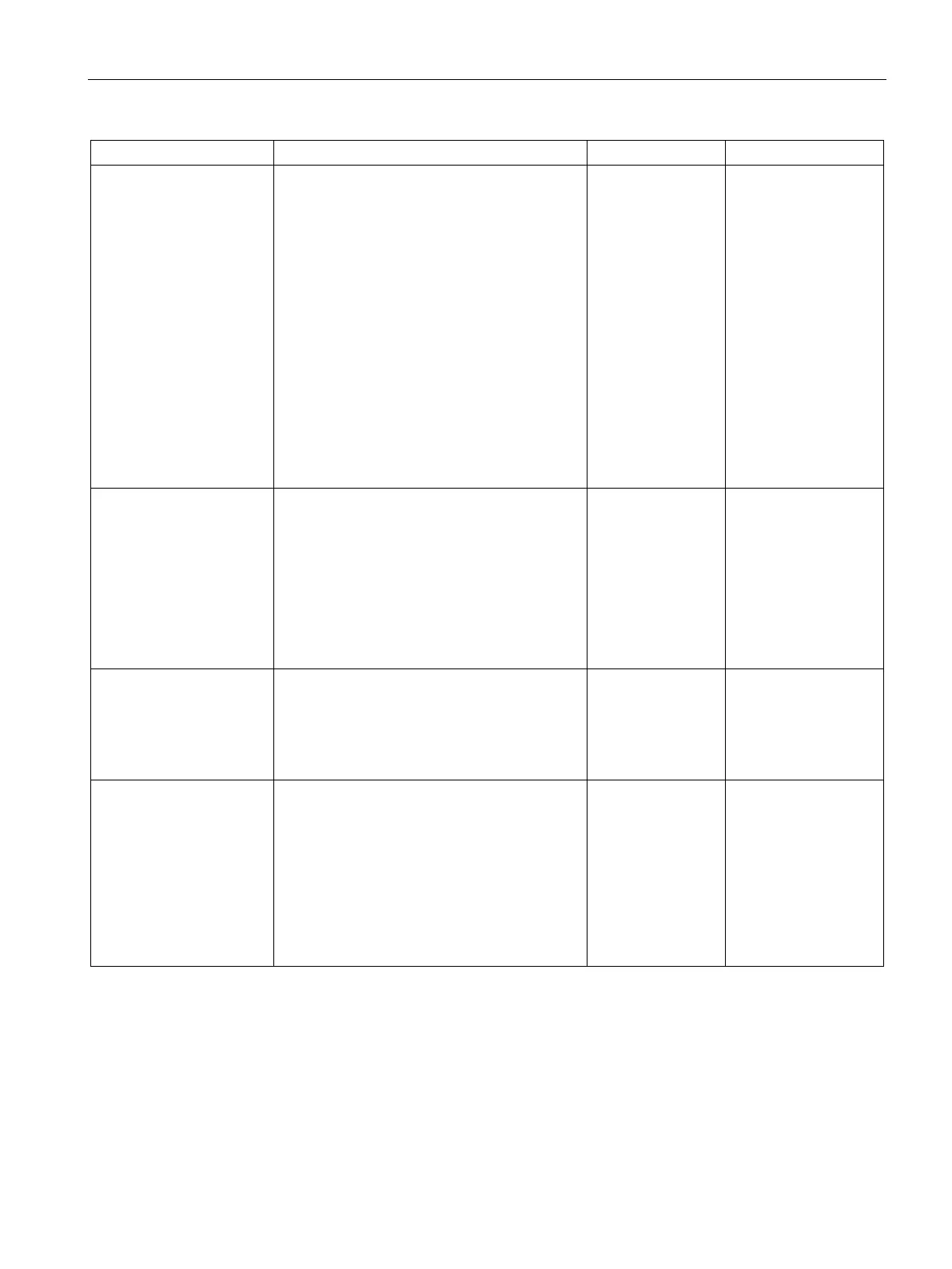Fail-Safe signal module (SM) I/O configuration
5.3 Configuring SM 1226 F-DI 16 x 24 VDC DI and channel parameters
S7-1200 Functional Safety Manual
Manual, 02/2015, A5E03470344-AA
109
Type sensor connection
: One sensor is connected to one
channel. For "1oo1 evaluation", the type of
sensor connection is set read only to "1 chan-
nel".
(with equivalent signals):
One two-channel equivalent sensor or two
single-channel equivalent sensors are con-
nected to the two channels, in a channel pair.
2 channel - 3 wire non-equivalent
: One two-
channel non-equivalent sensor is connected to
the two channels, in a channel pair.
2 channel - 4 wire non-equivalent
One two-
channel non-equivalent sensor or two single-
channel non-equivalent sensors are connected
to the two channels, in a channel pair.
Note: Refer to "Digital input applications"
(Page 68) for illustrations of connection modes.
1 channel
• 1 channel
• 2 channel equiva-
lent
• 2 channel - 3 wire
non-equivalent
• 2 channel - 4 wire
non-equivalent
Discrepancy behavior A logical difference between the two signals of
a 1oo2 input configuration is allowed, without
error, for the configured discrepancy time. You
can choose whether the reported process
value should be "0" or the last valid value dur-
ing the configured discrepancy time while the
signals do not match. If a logical difference in
1oo2 inputs persists for more than the config-
ured discrepancy time, the channel will be
passivated and the process value set to 0.
Supply value 0
• Supply value 0
• Supply last valid
value
Discrepancy time The two signals in a 1oo2 input configuration
will not change exactly at the same time, due
to differences in sensors, contacts, and wiring.
The discrepancy time parameter allows you to
configure a normally expected duration for a
mis-match between signals during transition.
10 ms 5 to 30000 ms
Reintegration after dis-
crepancy error
Assigns whether a zero state must be detected
on both 1oo2 channels before a previously
declared discrepancy can be cleared.
Test 0-signal not
necessary
• Test 0-signal
not necessary
• Test 0-signal nec-
essary
Note: The test 0-
signal must be ap-
plied for at least
100 ms.

